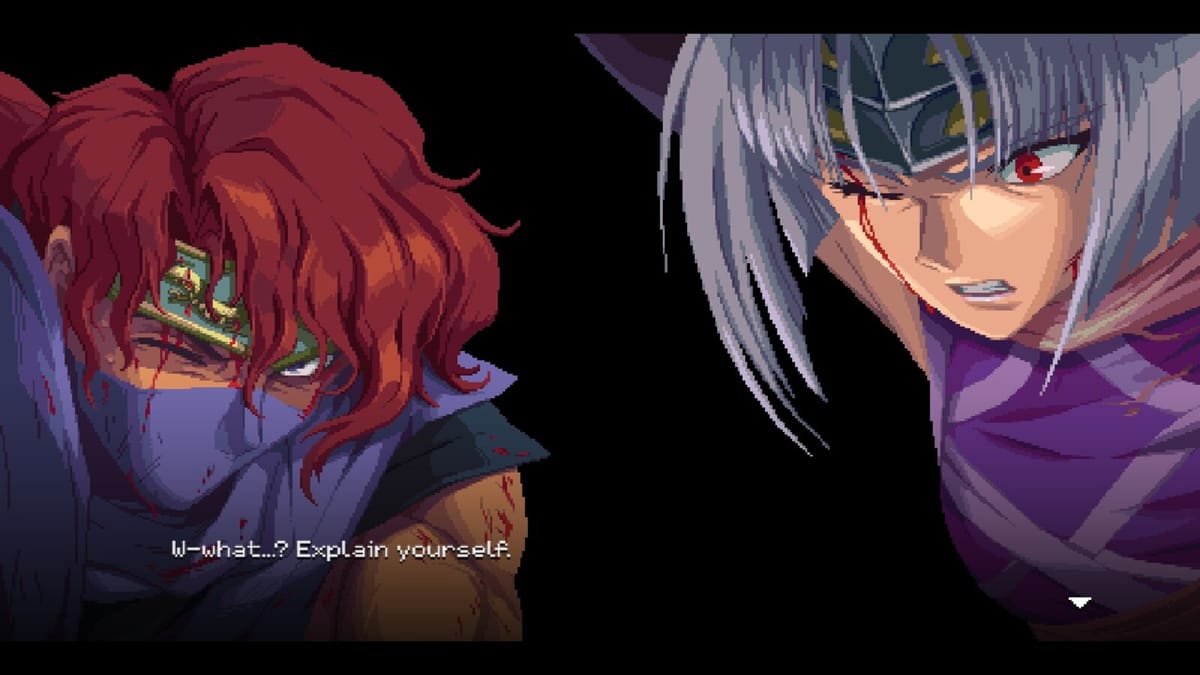
If you ask me, and who doesn’t, the major thing video games lack these days is respect. Developers need to respect players. Players need to respect games and the developers behind them. More respect could solve a lot of problems in a lot of ways, in business, in game design, and in society as a whole.
In a world without respect, Ninja Gaiden: Ragebound excited me. From the initial trailer to the playable demo, it looked and played the part of a true successor to a series that, in my view, is all about respect. Ninja Gaiden, both with its NES platformers and its 3D action game successors, respected players enough to challenge them thoroughly. These games carry a prestige that few can rival, and that comes from the mutual respect between the players and developers they established. Ragebound shows a lot of respect and succeeds in almost every way that counts as a result. Unfortunately, Ragebound’s way of showing respect can occasionally be misguided.
I won’t kid you of course, the game plays great. Although the 2D platforming calls back to Ninja Gaiden’s NES heyday, Ragebound’s true nature proves more complex. You run, dash, and slash with a far more expansive arsenal of attacks and acrobatics than the original outings can offer. While you can play Ragebound as a straightforward platformer, the metagame revolves around chaining as many enemy kills together as you can throughout the stage in a fluid speedrun. Aiming for higher combo scores (and correspondingly higher ranks) forms the brunt of the game’s challenge.

The emphasis on score-attacking evokes the spirit of the 3D Ninja Gaiden games, which similarly emphasized fighting enemies over traditional platforming. Ragebound often simulates the experience of clearing a room of 3D enemies by trapping you in rooms of spawning enemies or encouraging you to stick around in one area to clear multiple waves of foes. You can even feel a bit of 3D Ninja Gaiden in how the enemies themselves are designed. Just like in those games, some enemies in Ragebound will activate a few more brain cells than the average video game enemy by blocking attacks or avoiding you in annoying ways.
Marrying the two major sides of Ninja Gaiden together makes for a unique twist on the series that stands on its own surprisingly well. It always feels a bit lame to me when retro revivals either invoke or reuse things from past titles, to the point where you literally seem to be playing the game you remember playing before. Although Ragebound uses a few familiar scenarios, nothing about the gameplay itself feels all that close to playing the NES originals. The experience feels fresh, which is exactly how a new entry should. Even the remixes of old NES songs give them a new lease on life that sounds spectacular.
That marriage shines through the game’s narrative and visual presentation, too. Ninja Gaiden scholars know that the NES game takes place after all of the modern 3D games. Ragebound bridges this gap by being a parallel story to the original NES game, and it works surprisingly well. Visually, it has the gore and enemy designs of the 3D games, yet translates them tastefully to the 2D space. I also think it’s cool to make the two protagonists hail from the opposing Hayabusa and Black Spider clans, whose rivalry was a major part of the 3D games. The only thing that’s truly missing is an explanation for why Ryu would change out of his cool 3D-era black suit into the generic blue ninja garb for the NES game. Showing him in the black suit in this game kind of implies his black outfit is like casual wear he wears when he’s relaxing at home or something.
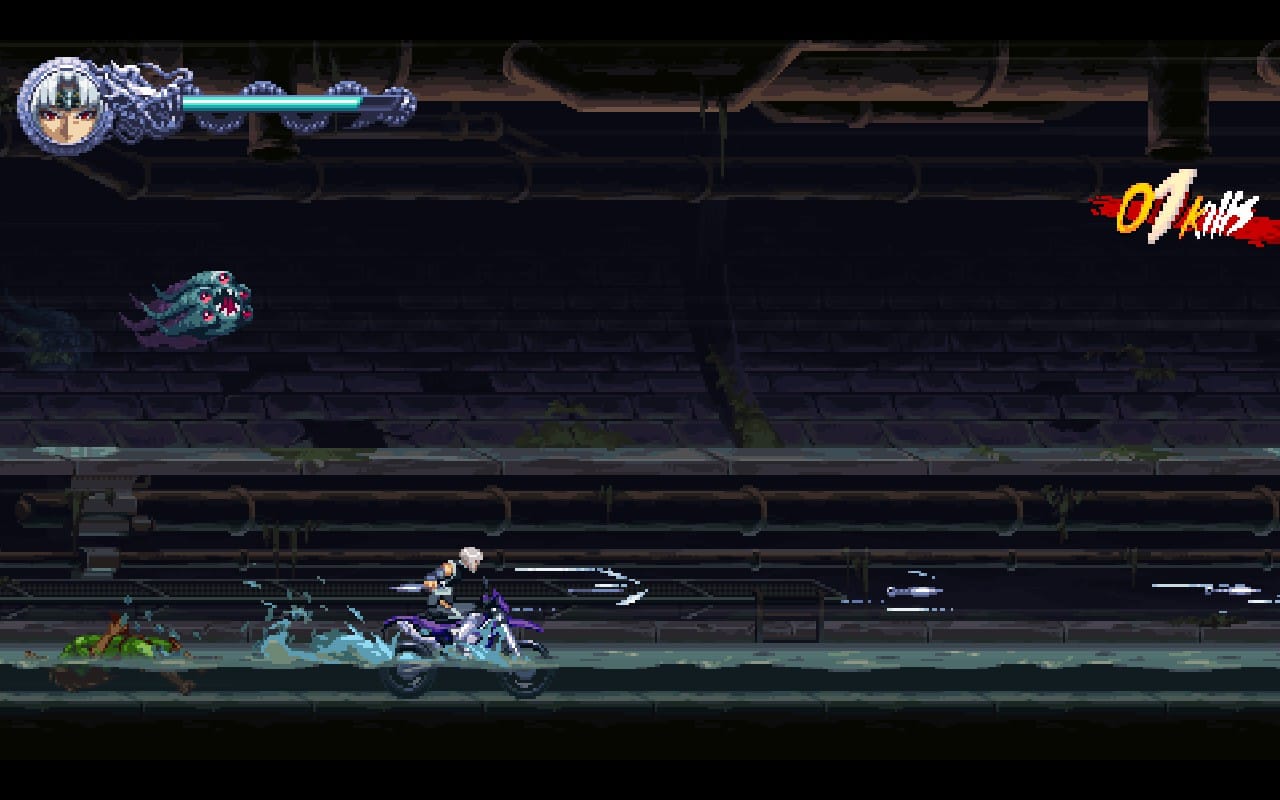
The story itself doesn’t offer much more than some fun nods and dialogue. I like the characters and wouldn’t mind seeing them again, but the story they’re in does not go anywhere particularly interesting. Maybe if Yaiba showed up that could have elevated things to high art.
All in all, Ragebound shows the right amount of respect to the series while feeling like its own thing. It’s snappy, it’s fun, and it’s well designed. It’s a fun ride of approximately four hours that looks great, plays great, and sounds great. For most players that will be enough.
Of course, I am not most players. I am a Ninja Gaiden fan, which means I must inflict my critiques and mental damage onto anyone still reading. Ragebound shows a lot of respect, but not necessarily to the player…at least not in the same way its ancestors did. While I think its intentions were pure, its approach to respect does bring the game down a few notches for me on a spiritual level.
My biggest concern comes from how Ragebound dictates how you play in ways that don't feel natural. Many of the tougher enemies require multiple hits to defeat, which can kill your pace if you're speeding through. Ragebound alleviates this problem by introducing enemies covered in auras – if you hit them with a correctly corresponding attack, you get supercharged and can then cut through the tougher enemy in one strike. In practice, whenever you see a bigger enemy you know you just have to stick around and kill a few smaller ones before the aura enemy shows up so you can cut your way through.
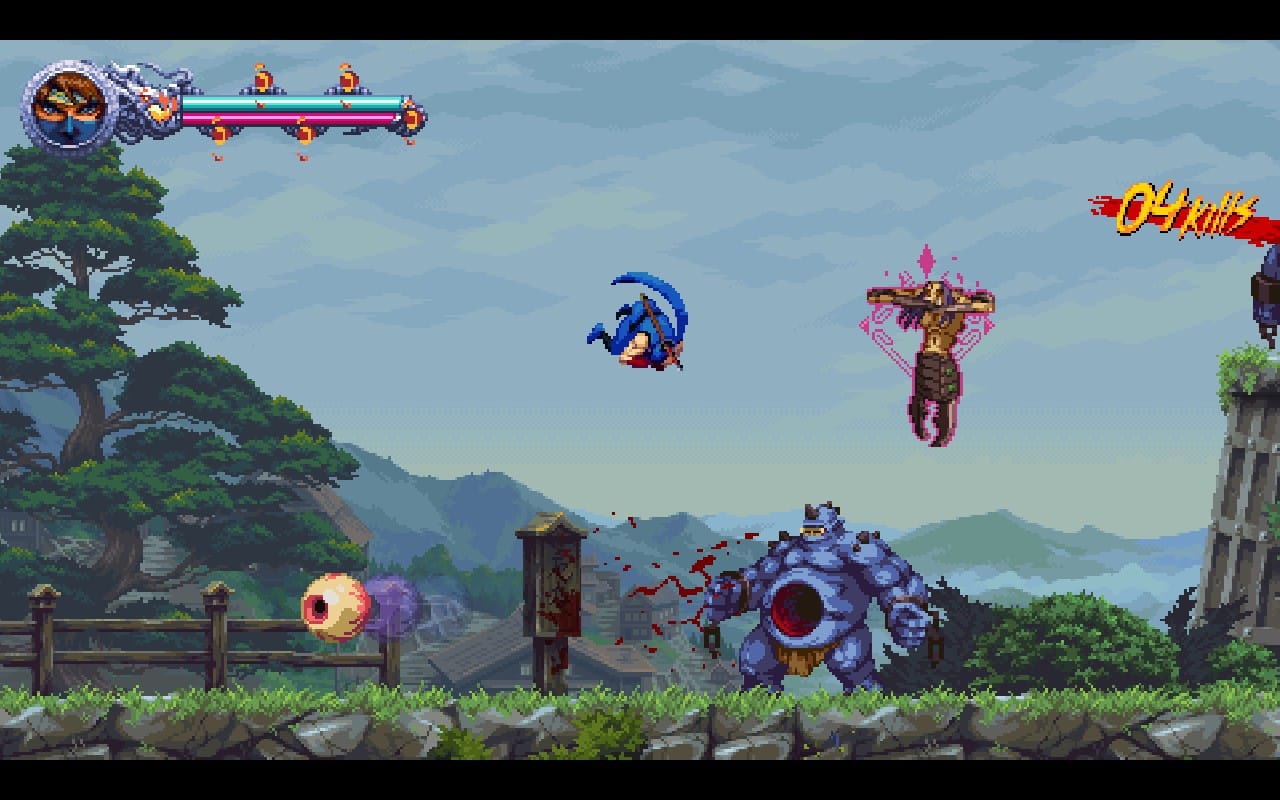
This aura concept gives the game an odd feeling, like some overbearing onlooker is sitting right next to you telling you what to do. Enemies no longer feel like enemies so much as carrots on sticks or coins in Mario leading you where to go. It’s a little condescending for a Ninja Gaiden title; a little “modern gaming,” if you will. I get that maybe the developers wanted to make a system that encourages people to stick around in one area a bit longer to stimulate the enemy wave design of the game, but it’s clumsy in execution. I’d rather figure out my own way through a level rather than be told what to do.
This sense of overbearing guidance further extends to the ranking system. Getting S ranks requires a minimum speed, combo count, and enemy kill count, picking up all the collectibles, and completing a list of bonus objectives that vary level to level. You’ve more or less got your entire path through a level pre-planned out for you up to and including the literal actions you take on that path. I felt like I needed to take mental notes of every weird requirement or enemy placement the stage wanted me to consider before trying a real run, so I could make sure I played the level in the exact right way the game wanted me to. It would be one thing if these tasks all directly corresponded to skill, but there’s often bizarre things like “use a specific move 5 times” seemingly thrown in to encourage you to play the developers’ preferred way rather than because it’s difficult to do the move.
Part of my dislike of all this guidance comes from the fact that it turns the game into something you inherently can’t feel your way through. No matter how much you sharpen your ninja senses, you will still need to adhere to forces outside of your control. These mental checklists don’t necessarily feel like they’re testing my skill so much as arbitrarily demanding I do every little thing the developers thought of. It’s just not natural! And if it’s not natural, it doesn’t feel cool.
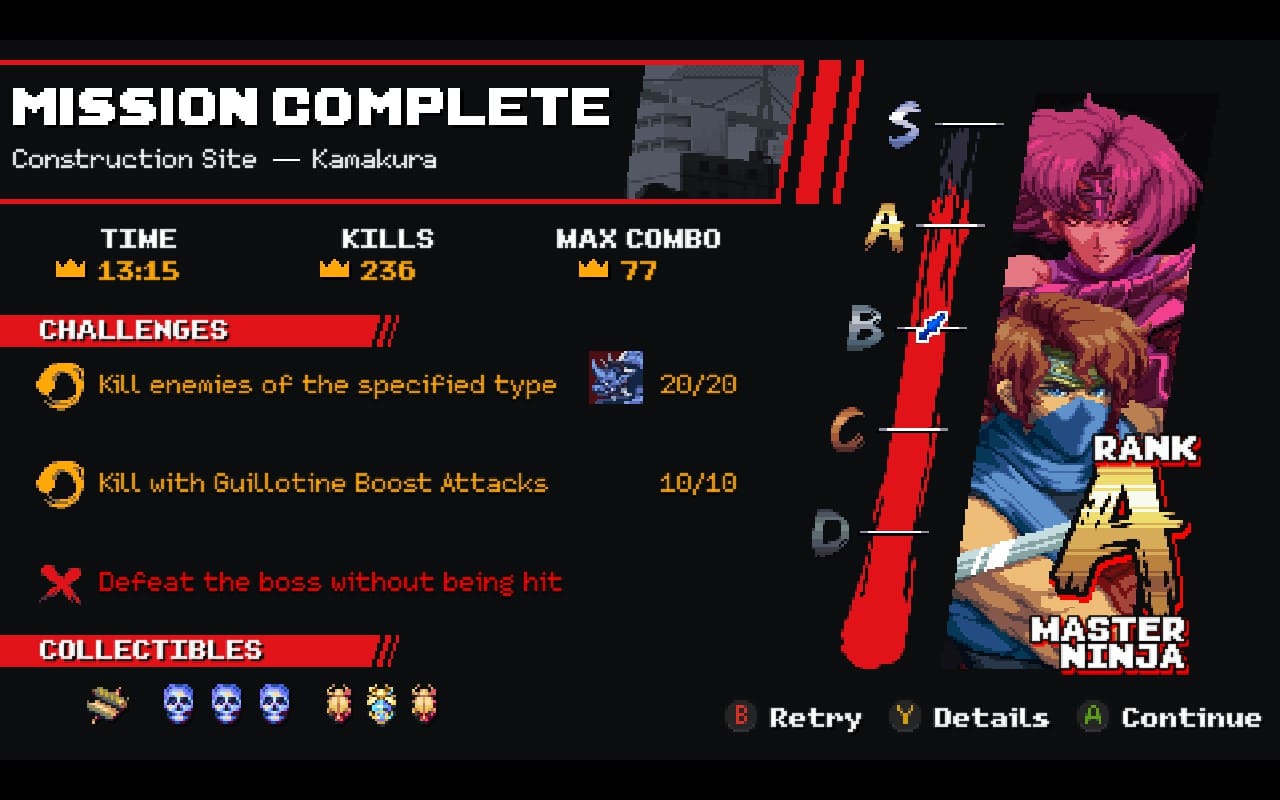
Of course the biggest ninja elephant in the room here is that without the ranking system, Ragebound just isn’t that difficult. I died here and there and the last boss took me a few tries, but I’d say this is the easiest game in the series by a longshot, particularly if you forgo chasing the higher ranks at all. If you do, getting some S++ ranks (which requires placing some debuff challenge talismans on your characters) can be a nice test of skill. Once you have a level down without dying, however, you’re not likely to have too much trouble, absent messing up one of the arbitrary bonus challenges at the last minute.
The unlockable hard mode admittedly does add some much needed twists and difficulty to the experience. Hard mode changes around the level design in some clever ways, introduces new, more aggressive variants of enemies into the mix, and even changes some boss encounters. I was impressed by how simply adding a pit of fire into the middle of an early boss fight forced me to think about the fight in a totally different way. These changes bring some challenge to the experience that the early game especially needed.
Hard mode adds some bite to the experience, just not quite enough to satisfy a sicko like myself. Although I felt like the changes taper off in terms of being noticeable the further you go in the game, the mode is overall a good addition. I was half-expecting a Master Ninja mode to push things even further after completing hard, but unfortunately that doesn't seem to exist. You do unlock some cool skins, so I’ll take that.
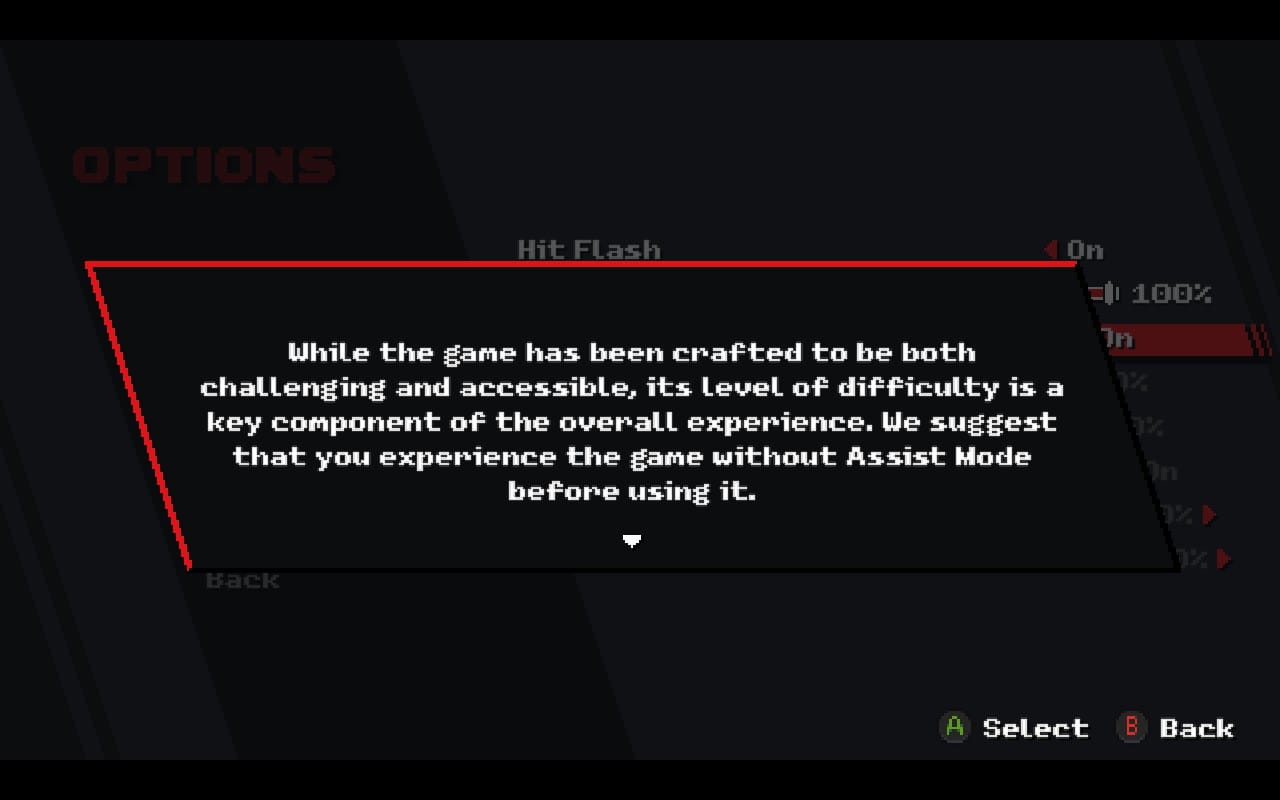
I suspect that the overbearing guidance and relatively low difficulty of Ragebound come from a place of wanting to be approachable to all kinds of players. The “accessibility” features like being able to turn off damage completely, even on hard mode, further drill in that player comfort was the priority. I often hear from people whose love of games I question that games don’t “respect their time.” I suppose these design decisions are the developers’ way of respecting those players. Is it really in the spirit of Ninja Gaiden to allow this nonsense, though? This is a series that would make you wear a little doggy ribbon for playing on easy instead of respecting the game enough to earnestly try it on its own terms. It seems misguided to dumb your game down for people who aren’t interested in appreciating what it has to offer in the first place, but that’s the dilemma of this disrespectful world we live in.
Ninja Gaiden: Ragebound
Great
Ragebound shows a great deal of respect to Ninja Gaiden’s legacy while being unafraid to try out some new ideas. It looks great, sounds great, and plays great. I just wish it respected the player on the same level as its predecessors, as its low difficulty and high player dictation is somewhat offputting for a longtime fan like myself.
Pros
- Mixes both eras of Ninja Gaiden well
- Fresh take on the series
- Looks great, sounds great, plays great
Cons
- Rank requirements dictate playstyle too much
- Even on Hard, doesn't live up to its namesake's difficulty
This review is based on an early PS5 copy provided by the publisher. Ninja Gaiden: Ragebound comes out on July 31, 2025.
